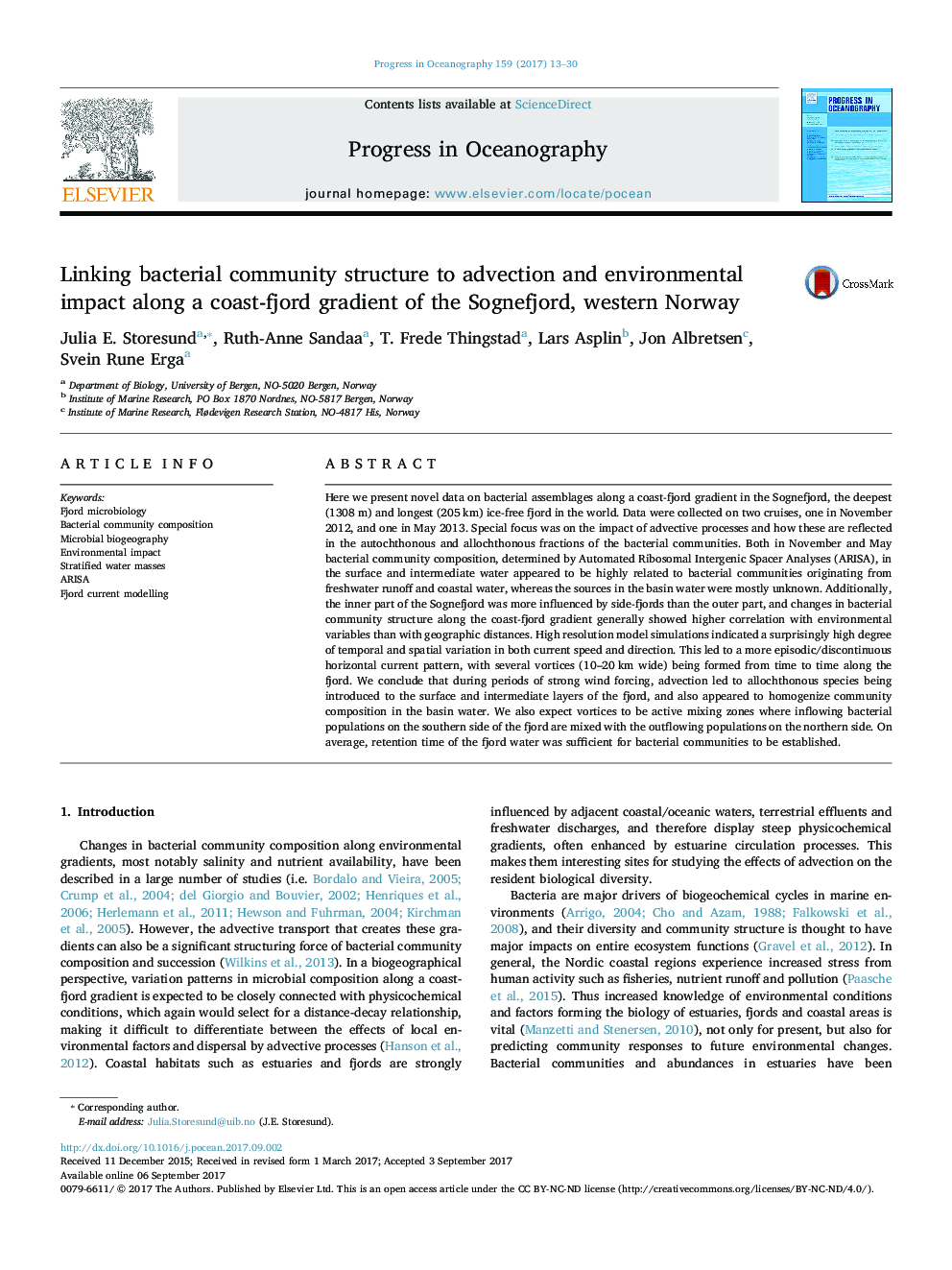| Article ID | Journal | Published Year | Pages | File Type |
|---|---|---|---|---|
| 5766461 | Progress in Oceanography | 2017 | 18 Pages |
â¢Novel data on bacterial assemblages along a coast-fjord gradient.â¢Implementation of high resolution model simulations.â¢Current speed and direction showed high degree of temporal and spatial variation.â¢Advection affect autochthonous and allochthonous bacterial communities.
Here we present novel data on bacterial assemblages along a coast-fjord gradient in the Sognefjord, the deepest (1308Â m) and longest (205Â km) ice-free fjord in the world. Data were collected on two cruises, one in November 2012, and one in May 2013. Special focus was on the impact of advective processes and how these are reflected in the autochthonous and allochthonous fractions of the bacterial communities. Both in November and May bacterial community composition, determined by Automated Ribosomal Intergenic Spacer Analyses (ARISA), in the surface and intermediate water appeared to be highly related to bacterial communities originating from freshwater runoff and coastal water, whereas the sources in the basin water were mostly unknown. Additionally, the inner part of the Sognefjord was more influenced by side-fjords than the outer part, and changes in bacterial community structure along the coast-fjord gradient generally showed higher correlation with environmental variables than with geographic distances. High resolution model simulations indicated a surprisingly high degree of temporal and spatial variation in both current speed and direction. This led to a more episodic/discontinuous horizontal current pattern, with several vortices (10-20Â km wide) being formed from time to time along the fjord. We conclude that during periods of strong wind forcing, advection led to allochthonous species being introduced to the surface and intermediate layers of the fjord, and also appeared to homogenize community composition in the basin water. We also expect vortices to be active mixing zones where inflowing bacterial populations on the southern side of the fjord are mixed with the outflowing populations on the northern side. On average, retention time of the fjord water was sufficient for bacterial communities to be established.
